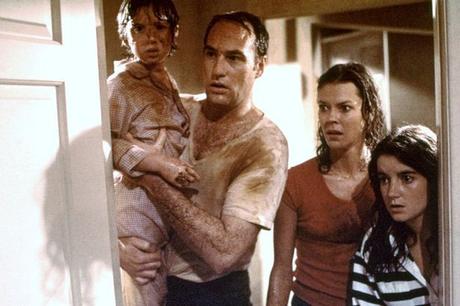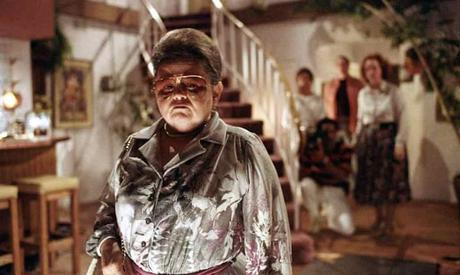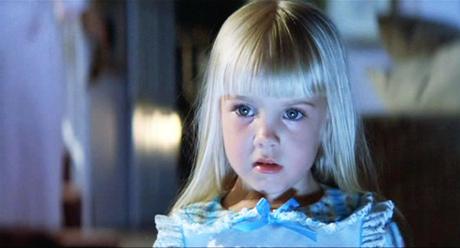Retro Review: 'Poltergeist'
Horror is often used as a mirror for the dark side of our society. In Reagans' America the rich got richer and the nuclear family headed in record numbers to the suburbs to enjoy the Era of Excess. But this materialism was built on the bones of those whose homes were now the lands for expansive new neighborhoods. In a famously contentious partnership in 1982 producer Stephen Spielberg and director Tobe Hooper took a look at what truly is the foundation of this lifestyle and what happens when the spirits of the past have had enough in Poltergeist.

Steven Freeling happily moves his wife Diane, son Robbie, and daughters Dana and Carol Anne into the nice new suburban community he is helping develop. While it initially seems like they have achieved the white, middle-class, nuclear family American dream they subtly begin to notice odd happenings in their new home. It all culminates with Carol Anne's ominous message of "they're here" and the supernatural powers haunting their home strike. While the rest of the Freelings deal with the sudden burst of paranormal activity, Carol Anne is taken away to another dimension. To save their daughter the family is forced to rely on a group of paranormal investigators and the strange medium Tangina Barrons. Just when they believe all of their problems have been resolved the true source of the horrors is made light in one final epic night of horror.
According to Hollywood-lore the production of this movie was far from simple as producer Spielberg and director Hooper developed a complicated partnership. According to many who worked on Poltergeist, the Jaws helmer actually stepping in to direct a good bit of the movie himself. In a sense this means there was pretty much two directors on set. This does come across onscreen as Poltergeist gives viewers a memorable mixing of Tobe Hooper's visceral style as well as the trademark Spielbergian fun blockbuster feel. This may be why the film has become so memorable and has proven to be a great gateway to the horror genre for so many. It is safe enough for audiences of all ages but the scares are genuinely effective. To this day, most of the people I talk to about Poltergeist shudder when recalling the infamous clown scene. A huge amount of credit goes to the special fx crew of the film and the way Hooper and Spielberg utilized them. This is a picture where they could have overwhelmed the overall project, but instead they were brought out only when needed and executed to macabre perfection.

This movie serves as an indictment of sorts against the incredibly materialistic culture of the 1980's. The Freelings are on the surface a wholesome, Reagan-voting, American family with their 2.5 kids and new home comfortably tucked away in the suburbs safe from the supposedly dangerous cities. No doubt many viewers saw some aspect of themselves portrayed onscreen. However, their success is literally built on the graves of the people who died and have been forgotten. What was once their home and legacy has been sacrificed on the altar of greed and commercialism. These elements came together to truly make Poltergeist a contemporary take on classic haunted house tropes.
Of course, no look at Poltergeis t could be complete without examining the supposed curse on the film and ensuing sequels. This extends to the horrific clown puppet malfunctioning to real human remains in the muddy pit with actress JoBeth Williams during the film's climax. While there is a long history of classic horror films being supposedly cursed, this franchise has endured an almost supernatural run of bad luck. You can read more about it .

Despite having two distinctive style, Tobe Hooper and Steven Spielberg created an absolute blast of a scary movie. Ultimately it does not matter who directed which scene or did the most pre-production work, it all came together in a wonderful way. Poltergeist is the kind of genre favorite which can give viewers a great fright but still be fun popcorn-fare.

